We are VdM (at a distance): The Mottl Family
 The very best part of Villa di Maria is our people. Our community of families, faculty and staff is something to be proud of and something to hold onto during our school's COVID-19 closure. In this series, We are VdM, we’ll highlight the energies, talents, humor and wisdom of some of our amazing people—and we'll stay connected!Today, we'll meet a family that has been with VdM for over a decade: Meg, Rich, Kellen and Beacan Mottl, and the newest member of their family, Celeste Williams. Kellen and Beacan are VdM alumni, who both currently attend Clayton High School. Celeste is one of the newest VdM students—she joined Mrs. Steinman's Children's House just this spring.
The very best part of Villa di Maria is our people. Our community of families, faculty and staff is something to be proud of and something to hold onto during our school's COVID-19 closure. In this series, We are VdM, we’ll highlight the energies, talents, humor and wisdom of some of our amazing people—and we'll stay connected!Today, we'll meet a family that has been with VdM for over a decade: Meg, Rich, Kellen and Beacan Mottl, and the newest member of their family, Celeste Williams. Kellen and Beacan are VdM alumni, who both currently attend Clayton High School. Celeste is one of the newest VdM students—she joined Mrs. Steinman's Children's House just this spring.
Villa di Maria: Tell us a bit about you and your family.
Rich: The Mottls are lean-in-to-it-ers and doers. We don’t back away. We work to figure things out.Meg: We are basically a cast of characters... BOOK CHARACTERS! Rich is the sole Hogwarts Hufflepuff in our family—full on Cedric Diggory. He seeks those in need of assistance EVERYWHERE WE GO, enthusiastically connects with people EVERYWHERE WE GO, and empathizes with every breathing creature EVERYWHERE WE GO.Kellen’s spirit character is Charlotte from Charlotte’s Web: gentle, kindhearted, wicked smart, agile, fiercely loyal. Toss in a heaping spoonful of “smart-funny,” and that is Kellen.Beacan is a blend of Encyclopedia Brown and Curious George—confident, interested in everything, athletic, passionate, independent, witty, and quick thinking. B has always been in perpetual motion with his brain and his body.Celeste is the spirited and spunky Inge Maria Jensen from When Mischief Came to Town. This gal’s heart is bigger than her body, and her boundless energy is contagious. She wonders, imagines, questions, and loves with her whole being.As for Meg, Rich once said she reminds him of Olive Kitteridge. Not the most flattering comparison, but I can’t argue...Kellen: We’re weird.Beacan: We are crazy. Wack.Celeste: I love my family.



VdM: How did you find Montessori and what brought you to VdM?
The Mottls: The two-word version: Kathy Thames.The lots-of-words version: From age two-and-a-half to three, Kellen questioned her daily existence at the play-based preschool she attended way back when. Examples: “I have a play kitchen at home. Why do I come here? I have swings at home. Why do I come here? I do crafts at home. Why do I come here? I have friends at home. Why do I come here?”Throughout that year, I serendipitously kept running into a former parent from my elementary-classroom teaching days (Kathy Thames) who nudged me to beeline myself over to Villa di Maria Montessori School, convinced that was the place for our family. Kathy spoke the words, “Villa di Maria Montessori” enough times that we finally scheduled a tour.All things Villa di Maria Montessori School sparked and amazed and intrigued.We were ALL IN.Our oldest stepped foot in Mrs. Milos’s classroom in the fall of 2007 and was thrilled on a cellular level to be in the Children’s House. Beacan clamored after her and joined the VdM community in the fall of 2008. We are currently pinching ourselves daily that Celeste is living the dream at VdM, soaking in all the wonderfulness the Primary Montessori experience has to offer. 

 VdM: What do you and your spouse do, career-wise?The Mottls: Rich has been successfully leading the charges at United Surgical Partners for over 13 years as a Vice President of Business Development. The company is based in Dallas and owns over 400 hospitals and surgery centers across the country. Husband Rich travels part of each week, which appeals to his need for constant stimulation and nonstop interaction with a variety of people across all branches of the company. Meg’s curvy career path has circled back to where it started. She taught 3rd through 7th grades back in the day, then stayed home for 3 years when Kellen and Beacan were tiny, owned a small business for several years, worked at VdM in Admissions for a bit, and is currently gearing up to return to full time classroom teaching this fall.
VdM: What do you and your spouse do, career-wise?The Mottls: Rich has been successfully leading the charges at United Surgical Partners for over 13 years as a Vice President of Business Development. The company is based in Dallas and owns over 400 hospitals and surgery centers across the country. Husband Rich travels part of each week, which appeals to his need for constant stimulation and nonstop interaction with a variety of people across all branches of the company. Meg’s curvy career path has circled back to where it started. She taught 3rd through 7th grades back in the day, then stayed home for 3 years when Kellen and Beacan were tiny, owned a small business for several years, worked at VdM in Admissions for a bit, and is currently gearing up to return to full time classroom teaching this fall.
VdM: Tell us about your typical weekend.
The Mottls: We thrive on a full agenda of activity. Bring on the overscheduling of sports and lessons and “forced family fun”! Swim practices, meets, soccer practices, games, music lessons, gymnastics lessons, mountain biking, brisk walks with the dogs, playground shenanigans, scootering, shooting hoops.
As an entity, our family also struggles with a Starbucks addiction. We frequent said establishments multiple times a day. It’s a problem...Other than that, individually...Rich enjoys vino and sinking into the couch at night.Meg deep dives into books. Kellen never tires of socializing with friends with any spare minutes.Beacan alternates between creating music and athletic endeavors.Celeste imagines, dances, and sings… Rewind. Repeat.



VdM: Tell us something your family is doing to make the most of this extended break?
The Mottls: We’ve been plotting and planning a large vegetable garden to plant this spring and nourish our family through the summer.
We’ve honed our culinary skills in the kitchen, experimenting with new recipes from the New York Times food section.We’ve spent hours each day painting and creating acrylic masterpieces.We formed a family book club and engaged in thought-provoking weekly discussions. We’ve each chosen a new language to master, using Duolingo.Full disclaimer: each statement above is entirely false.The real scoop:
- Rich has been grounded from work travel. Biggest perk of this break is that Husband Rich is HOME for an extended period of time!
- The scooters, trikes, bikes, and skateboards are logging lots of minutes around the neighborhood and wearing tracks in the sidewalks.
- Hours of crafting with beads, water colors, crayons and clay is a plus.
- The older Mottl crowd has binged on episodes of Brooklyn Nine Nine. We just need to laugh—loudly and often—these days.
- Across-the-street-yelling-while-keeping-social-distance conversations with our neighbors are much needed for sanity and all kinds of hysterical.
VdM: A question specifically for Celeste: Which do you like more, ponies or puppies? And why?
Celeste: What did you say? No. I like ponies AND puppies. They’re so cute; they’re so fun to play with. I like real ponies like Prince and pretend ponies like Pinky Pie. I have my own two puppies, Mabes and Otto. Mabes is crabby. Otto is my favorite.


Thank you, Meg, Rich, Kellen, Beacan and Celeste. We can't imagine Villa di Maria without you and we are so happy your growing family is still a part of our community.Photos courtesy of the Mottl family.
 While our school has temporarily closed in the effort to slow the spread of COVID-19, our community has jumped back in to what we do best—learning! Villa di Maria guides are working in collaboration with parents and students every day to keep our children connected and inspired to keep learning.In today’s post, we’ll share some ideas for an essential part of the day—getting outside. Spending time outdoors is a great way to get moving, reduce stress and
While our school has temporarily closed in the effort to slow the spread of COVID-19, our community has jumped back in to what we do best—learning! Villa di Maria guides are working in collaboration with parents and students every day to keep our children connected and inspired to keep learning.In today’s post, we’ll share some ideas for an essential part of the day—getting outside. Spending time outdoors is a great way to get moving, reduce stress and 








 We hope these ideas inspire you to embrace the outdoors during distance learning. You and your child will learn more, feel more relaxed and have more fun. Happy spring from VdM to you!Thank you to the Andre Zheng, Dosanjh, Smith and Thrall families for the photos.
We hope these ideas inspire you to embrace the outdoors during distance learning. You and your child will learn more, feel more relaxed and have more fun. Happy spring from VdM to you!Thank you to the Andre Zheng, Dosanjh, Smith and Thrall families for the photos.  While Villa di Maria, the school, is temporarily closed in the collaborative effort to slow the spread of COVID-19, Villa di Maria, the community, is just coming off Spring Break and ready to jump back in to what we do best—learning!Our incredible and dedicated guides have been working to create distance-learning plans for each of our levels—the Children's House, Lower Elementary and Upper Elementary—to keep our children connected to VdM and inspired to keep learning. Each level's plan is designed to meet the particular developmental needs of its children (in true Montessori fashion!) but they all share a common framework—independence within structure and consistency.In today's post, we'll share some ideas for getting your home and your family ready to take on the challenge of the upcoming weeks—to get ready for distance learning.
While Villa di Maria, the school, is temporarily closed in the collaborative effort to slow the spread of COVID-19, Villa di Maria, the community, is just coming off Spring Break and ready to jump back in to what we do best—learning!Our incredible and dedicated guides have been working to create distance-learning plans for each of our levels—the Children's House, Lower Elementary and Upper Elementary—to keep our children connected to VdM and inspired to keep learning. Each level's plan is designed to meet the particular developmental needs of its children (in true Montessori fashion!) but they all share a common framework—independence within structure and consistency.In today's post, we'll share some ideas for getting your home and your family ready to take on the challenge of the upcoming weeks—to get ready for distance learning.
 To facilitate their confidence-boosting sense of independence with a few modifications to your home environment. Have your children help prepare their work- and play-spaces by tidying them up, organizing the materials they might need for work, and setting those items out for your children to easily access. For younger children, these items might include scissors, paints, pencils, paper, picture books, and flowers; and for older children: books, work journals, lined and graph paper, rulers and protractors, clay, yarn, flowers and leafy plants, and laptops/tablets.So that's step one—create a space to inspire and facilitate independent learning for children while they're learning from home. Which brings us to step two...
To facilitate their confidence-boosting sense of independence with a few modifications to your home environment. Have your children help prepare their work- and play-spaces by tidying them up, organizing the materials they might need for work, and setting those items out for your children to easily access. For younger children, these items might include scissors, paints, pencils, paper, picture books, and flowers; and for older children: books, work journals, lined and graph paper, rulers and protractors, clay, yarn, flowers and leafy plants, and laptops/tablets.So that's step one—create a space to inspire and facilitate independent learning for children while they're learning from home. Which brings us to step two...





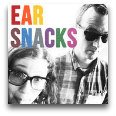

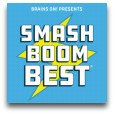

 The very best part of Villa di Maria is our people. Our community of families, faculty and staff is something to be proud of. In this series, We are VdM, we’ll highlight the energies, talents, humor and wisdom of some of our amazing people. Today, we'll meet Faith, Tim and Ethan Schroeder. The Schroeders joined VdM last year, and Ethan is currently a second-year student in Ms. Sarah's Lower Elementary.
The very best part of Villa di Maria is our people. Our community of families, faculty and staff is something to be proud of. In this series, We are VdM, we’ll highlight the energies, talents, humor and wisdom of some of our amazing people. Today, we'll meet Faith, Tim and Ethan Schroeder. The Schroeders joined VdM last year, and Ethan is currently a second-year student in Ms. Sarah's Lower Elementary.

 VdM: How did you find Montessori and what brought you to
VdM: How did you find Montessori and what brought you to 

 VdM: What is something your family plans to do this summer?
VdM: What is something your family plans to do this summer?

 The very best part of Villa di Maria is our people. Our community of families, faculty and staff is something to be proud of. In this series, We are VdM, we’ll highlight the energies, talents, humor and wisdom of some of our amazing people. Today, we'll meet Heather, Trevor, Ella and Cade Davies. The Davies family joined VdM last year. Cade is currently a second-year student in Ms. Sarah's Lower Elementary and Ella is a fourth-year student in Upper Elementary.
The very best part of Villa di Maria is our people. Our community of families, faculty and staff is something to be proud of. In this series, We are VdM, we’ll highlight the energies, talents, humor and wisdom of some of our amazing people. Today, we'll meet Heather, Trevor, Ella and Cade Davies. The Davies family joined VdM last year. Cade is currently a second-year student in Ms. Sarah's Lower Elementary and Ella is a fourth-year student in Upper Elementary.



 [gallery columns="2" size="full" ids="7384,7409"]
[gallery columns="2" size="full" ids="7384,7409"]

 Thank you, Heather, Trevor, Ella and Cade. We are thrilled to have your family as part of ours.Photos courtesy of the Davies family.
Thank you, Heather, Trevor, Ella and Cade. We are thrilled to have your family as part of ours.Photos courtesy of the Davies family.
 Spring in Missouri, a time for crocuses, chickadees, wild flowers, frog songs... and terrible, loud, scary storms. For many children, the sights and sounds of a storm—or even the idea of a storm—can cause a lot of anxiety. Their imaginations are powerful and they might not be able to make the distinction between what could and what is actually happening. And if they've heard of or seen footage of a recent weather disaster, of which there are many in here in Missouri, their anxiety might be heightened.Here at Villa di Maria, we practice our severe weather protocols with the children a few times during the school year, in sync with the city's severe weather/tornado sirens. While they are necessary to ensure our safety, these drills can be tough for children who are especially prone to weather anxiety. So, what can we (and you) do to help ease the anxiety?
Spring in Missouri, a time for crocuses, chickadees, wild flowers, frog songs... and terrible, loud, scary storms. For many children, the sights and sounds of a storm—or even the idea of a storm—can cause a lot of anxiety. Their imaginations are powerful and they might not be able to make the distinction between what could and what is actually happening. And if they've heard of or seen footage of a recent weather disaster, of which there are many in here in Missouri, their anxiety might be heightened.Here at Villa di Maria, we practice our severe weather protocols with the children a few times during the school year, in sync with the city's severe weather/tornado sirens. While they are necessary to ensure our safety, these drills can be tough for children who are especially prone to weather anxiety. So, what can we (and you) do to help ease the anxiety?
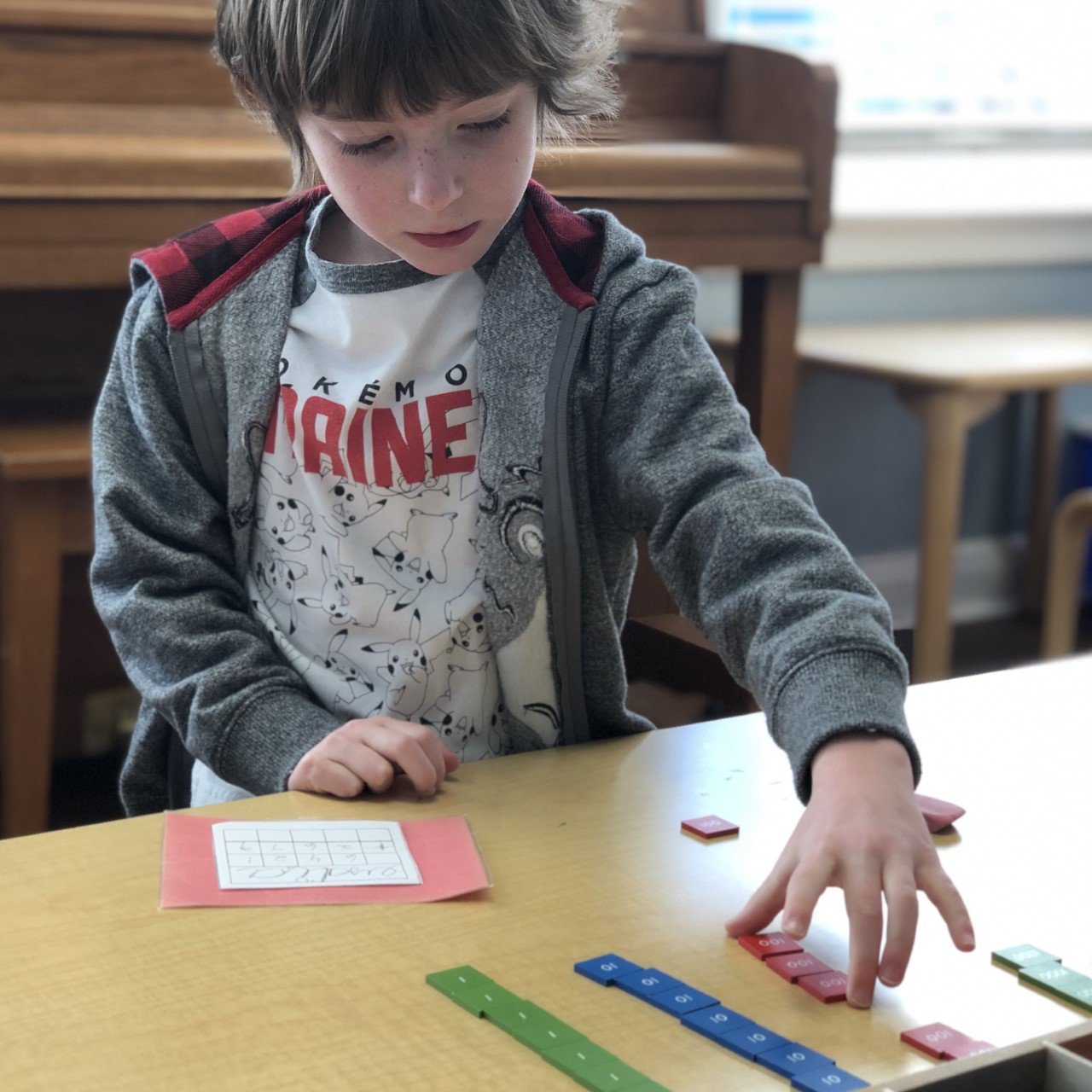 Parents of young Montessori children don't often see a lot of "work product" from math lessons coming home with their children. There are no work sheets to complete over the weekend. No times tables to recite over dinner. This can seem foreign to those of us who learned math by rote learning—through drills, practice, memorization and workbooks to complete at home—and lead us to wonder, is math really happening in the Children's House?The answer is yes! Math is happening in the Children's House, and it is happening in a meaningful and intentional way.Like everything in the Children's House, the sequence of math lessons is designed to follow the natural development of the child. Math is introduced to the very young child in a concrete way, with sensorial materials that she can touch, feel and manipulate with her hands. With these hands-on materials, the child learns how to count, to measure, to recognize and predict patterns, to compare, and she begins to discover what happens when numbers are put together in different ways. These first materials also introduce, from the very beginning, place values—ones, tens, teens, hundreds and thousands—giving the child a solid, foundational number sense.As the child develops the ability for abstract thought, she's introduced to materials that maintain the hands-on involvement while also offering opportunities to think abstractly. She's introduced to the four operations, one at a time, as she begins to think analytically and to solve problems. And she is introduced to the purely abstract numbers on a page.
Parents of young Montessori children don't often see a lot of "work product" from math lessons coming home with their children. There are no work sheets to complete over the weekend. No times tables to recite over dinner. This can seem foreign to those of us who learned math by rote learning—through drills, practice, memorization and workbooks to complete at home—and lead us to wonder, is math really happening in the Children's House?The answer is yes! Math is happening in the Children's House, and it is happening in a meaningful and intentional way.Like everything in the Children's House, the sequence of math lessons is designed to follow the natural development of the child. Math is introduced to the very young child in a concrete way, with sensorial materials that she can touch, feel and manipulate with her hands. With these hands-on materials, the child learns how to count, to measure, to recognize and predict patterns, to compare, and she begins to discover what happens when numbers are put together in different ways. These first materials also introduce, from the very beginning, place values—ones, tens, teens, hundreds and thousands—giving the child a solid, foundational number sense.As the child develops the ability for abstract thought, she's introduced to materials that maintain the hands-on involvement while also offering opportunities to think abstractly. She's introduced to the four operations, one at a time, as she begins to think analytically and to solve problems. And she is introduced to the purely abstract numbers on a page.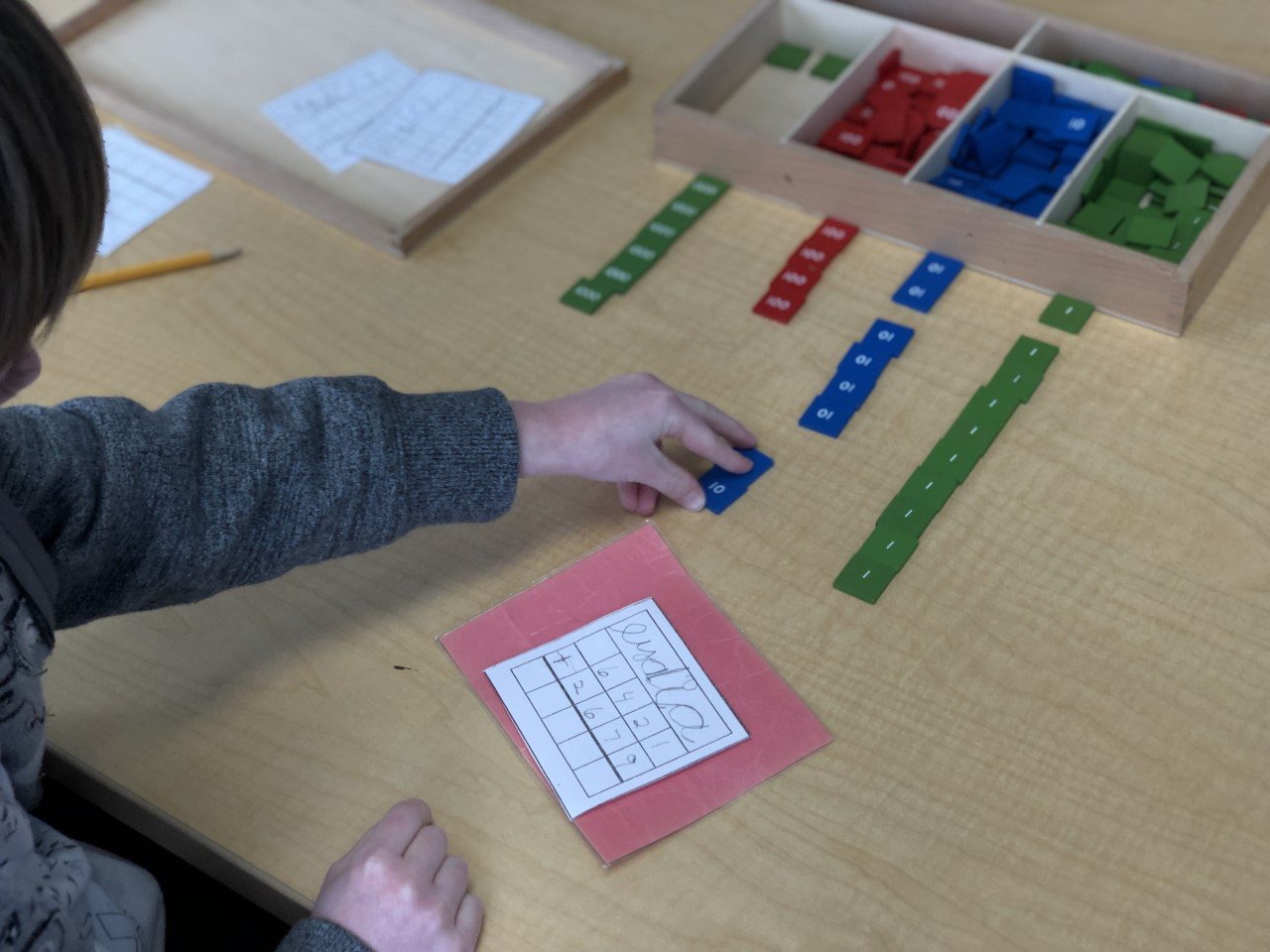 The Addition Stamp Game is the child's introduction into the world of abstract calculations. By the time she's introduced to this lesson, the child has mastered the foundational math materials that gave her a number sense and she has been introduced to the first operation, addition, with the golden beads.When working with The Addition Stamp Game, the child is given an addition problem on paper and asked to calculate it using small tiles, or stamps. She is practicing an abstract calculation while using familiar, concrete methods of mathematical thinking.
The Addition Stamp Game is the child's introduction into the world of abstract calculations. By the time she's introduced to this lesson, the child has mastered the foundational math materials that gave her a number sense and she has been introduced to the first operation, addition, with the golden beads.When working with The Addition Stamp Game, the child is given an addition problem on paper and asked to calculate it using small tiles, or stamps. She is practicing an abstract calculation while using familiar, concrete methods of mathematical thinking.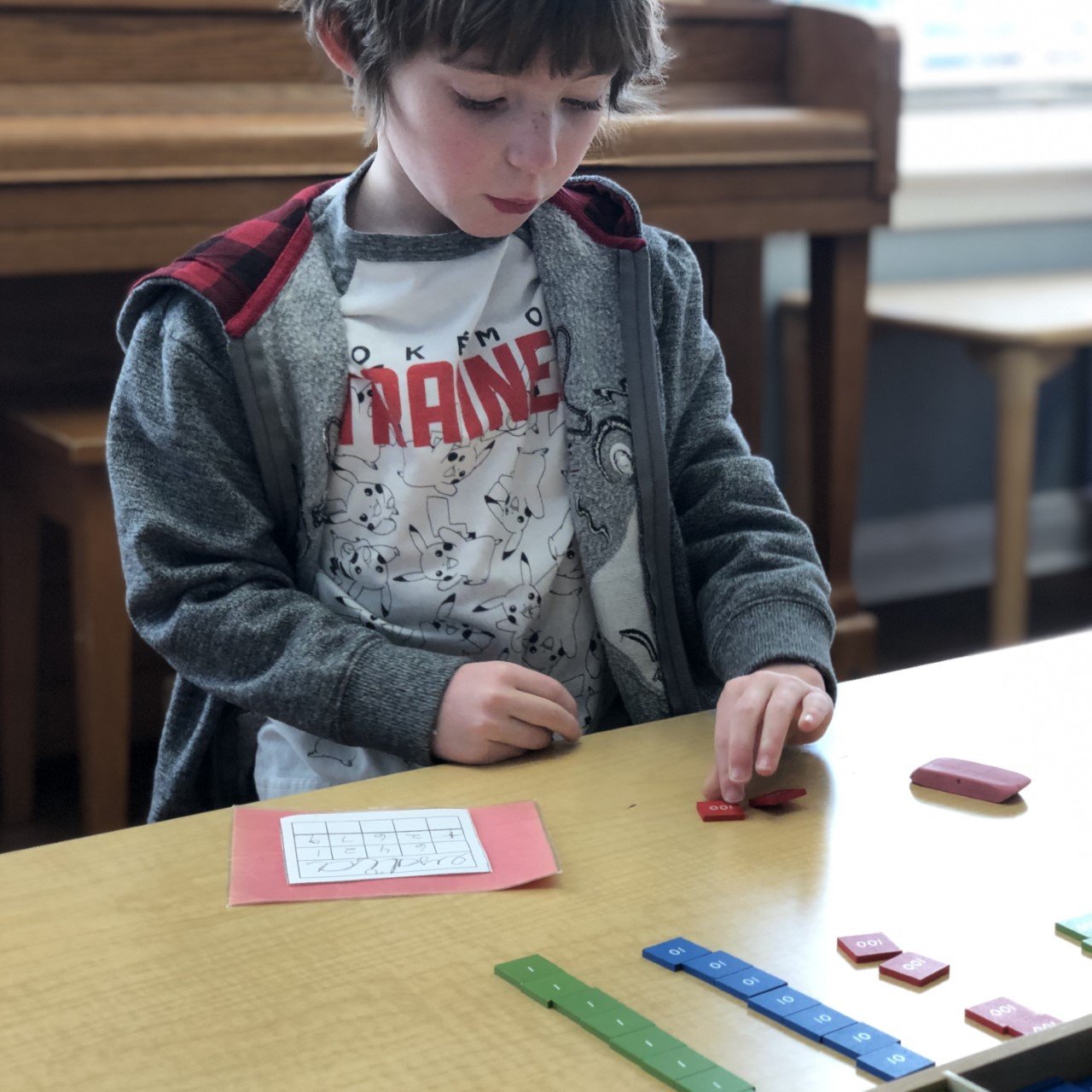 The problem combines two 4-digit numbers so the child will use her knowledge of place values. The tiles are color-coded and numbered to represent the groups of ten. As she works out the problem with tiles and comes to a solution, she writes her answer on the page, practicing her number writing and learning a new way to represent her work.After she has mastered the Addition Stamp Game, the child will have more opportunities to bridge her foundation in the concrete with her newly abstract mind with Stamp Games in the remaining three operations—subtraction, multiplication and division. The progress will be careful and deliberate, following the pace of the child's development.
The problem combines two 4-digit numbers so the child will use her knowledge of place values. The tiles are color-coded and numbered to represent the groups of ten. As she works out the problem with tiles and comes to a solution, she writes her answer on the page, practicing her number writing and learning a new way to represent her work.After she has mastered the Addition Stamp Game, the child will have more opportunities to bridge her foundation in the concrete with her newly abstract mind with Stamp Games in the remaining three operations—subtraction, multiplication and division. The progress will be careful and deliberate, following the pace of the child's development.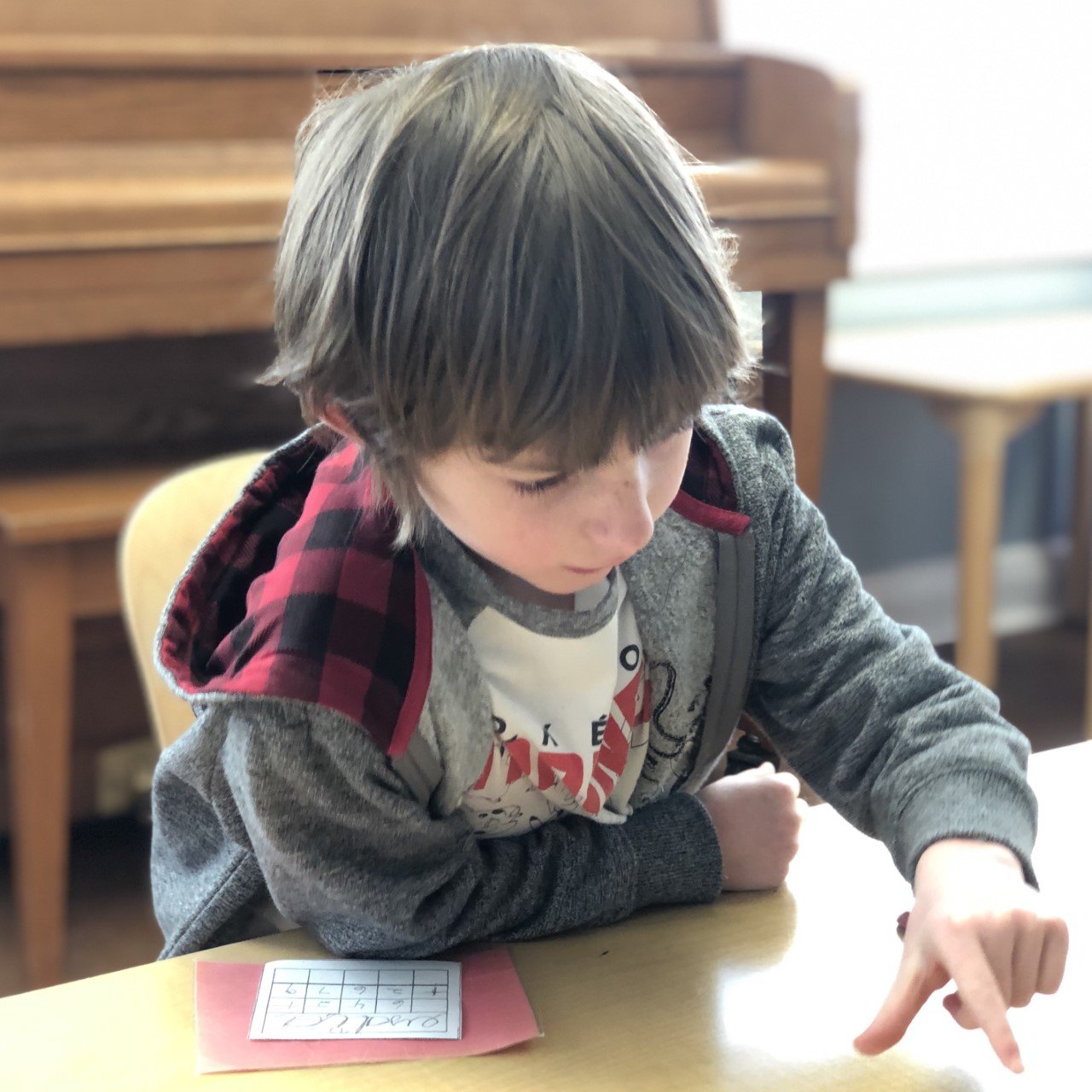 As she moves toward and through elementary, her work with math will become progressively less concrete until, ultimately, she will develop purely abstract mathematical reasoning.
As she moves toward and through elementary, her work with math will become progressively less concrete until, ultimately, she will develop purely abstract mathematical reasoning.
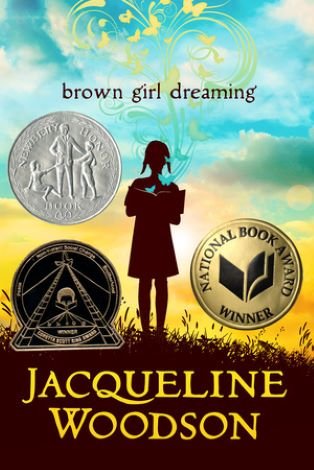 Brown Girl Dreaming is Jacqueline Woodson's beautifully written memoir. Through poems, Jacqueline tells the story of her childhood in the 1960s and 70s, moving back and forth between the Northeast and the South. Jackie's life is filled with her family's struggles—her parents' relationship falls apart, her baby brother is hospitalized, her uncle is sent to prison and her grandfather dies. But it is also filled with her family's strength—her grandparents' devotion to religion and peaceful civil rights activism. Brown Girl Dreaming weaves the stories of Jackie's family together with her own coming of age story, as she develops her own values, finds new friends and discovers her passion as a writer.
Brown Girl Dreaming is Jacqueline Woodson's beautifully written memoir. Through poems, Jacqueline tells the story of her childhood in the 1960s and 70s, moving back and forth between the Northeast and the South. Jackie's life is filled with her family's struggles—her parents' relationship falls apart, her baby brother is hospitalized, her uncle is sent to prison and her grandfather dies. But it is also filled with her family's strength—her grandparents' devotion to religion and peaceful civil rights activism. Brown Girl Dreaming weaves the stories of Jackie's family together with her own coming of age story, as she develops her own values, finds new friends and discovers her passion as a writer. 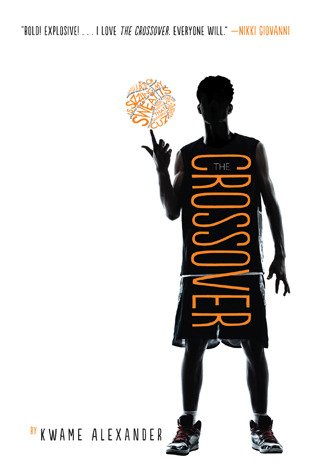 The Crossover by Kwame Alexander is told in vivid, rhythmic verse, in the voice of 12-year-old Josh Bell. Josh and his identical twin, JB, have basketball in their blood—their father, Chuck, is a former pro basketball player—and they share a true love of the game. Growing up, they play basketball every night with Chuck. But as they enter seventh grade, their interests begin to diverge. JB has a girlfriend and spends less and less time with Josh and Chuck. Josh is lonely, jealous and angry. The brothers have a terrible fight and their relationship seems permanently broken. At the same time, Chuck's health is failing. Although he is only 39, Chuck suffers a series of heart attacks and ultimately dies. Josh is devastated but also rediscovers his need for his brother, and the two find reconciliation.
The Crossover by Kwame Alexander is told in vivid, rhythmic verse, in the voice of 12-year-old Josh Bell. Josh and his identical twin, JB, have basketball in their blood—their father, Chuck, is a former pro basketball player—and they share a true love of the game. Growing up, they play basketball every night with Chuck. But as they enter seventh grade, their interests begin to diverge. JB has a girlfriend and spends less and less time with Josh and Chuck. Josh is lonely, jealous and angry. The brothers have a terrible fight and their relationship seems permanently broken. At the same time, Chuck's health is failing. Although he is only 39, Chuck suffers a series of heart attacks and ultimately dies. Josh is devastated but also rediscovers his need for his brother, and the two find reconciliation. 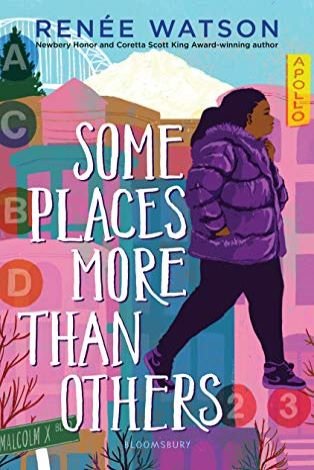 Some Places More Than Others by Renee Watson tells the story of 12-year-old Amara's trip with her father to visit his childhood home in Harlem and to make a family-history time capsule for school. She is excited to see the city, to explore the places of her father's childhood and to meet her grandfather and cousins for the first time in person. The trip is nothing like what Amara imagined—the city is crowded, loud and confusing, and the relationships in her family are strained. Amara begins to explore the sights in Harlem and to ask questions. She begins to learn more about her family's history and about the history of African-Americans in New York City. She discovers the ways she is connected to her family and to history, and she begins to help her family heal.
Some Places More Than Others by Renee Watson tells the story of 12-year-old Amara's trip with her father to visit his childhood home in Harlem and to make a family-history time capsule for school. She is excited to see the city, to explore the places of her father's childhood and to meet her grandfather and cousins for the first time in person. The trip is nothing like what Amara imagined—the city is crowded, loud and confusing, and the relationships in her family are strained. Amara begins to explore the sights in Harlem and to ask questions. She begins to learn more about her family's history and about the history of African-Americans in New York City. She discovers the ways she is connected to her family and to history, and she begins to help her family heal. 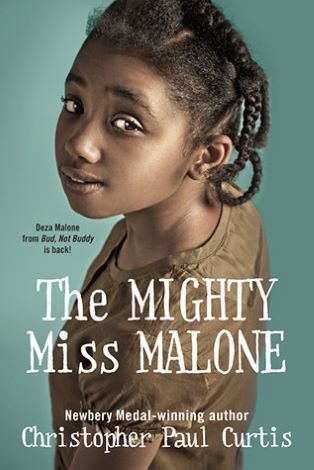 The Mighty Miss Malone by Christopher Paul Curtis is a historical novel set in Gary, Indiana during the Great Depression. It is the story of Deza Malone and her family. Deza is exceptionally smart, loves language and shines at her school in Gary, but her family cannot stay there because there is no work for her father. The family moves to Michigan to find work, and things begin to look up for a short while before everything gets worse—Deza's parents lose their jobs, they face health crises, they run out of food and clothing, they lose their home and face scathing racism. Throughout it all, Deza is also attending a new school, where she is discriminated against and told she is not as smart as she knows she is. Still, Deza—the mighty Miss Malone—and her family remain hopeful, and they continue to struggle, together, for "a place called Wonderful."
The Mighty Miss Malone by Christopher Paul Curtis is a historical novel set in Gary, Indiana during the Great Depression. It is the story of Deza Malone and her family. Deza is exceptionally smart, loves language and shines at her school in Gary, but her family cannot stay there because there is no work for her father. The family moves to Michigan to find work, and things begin to look up for a short while before everything gets worse—Deza's parents lose their jobs, they face health crises, they run out of food and clothing, they lose their home and face scathing racism. Throughout it all, Deza is also attending a new school, where she is discriminated against and told she is not as smart as she knows she is. Still, Deza—the mighty Miss Malone—and her family remain hopeful, and they continue to struggle, together, for "a place called Wonderful."
 Each year, our sixth-year students travel to New York to participate in Montessori Model United Nations (MMUN). Similar to the traditional Model UN that many of us might remember from high school, this program has been especially designed with Montessori principles in mind—it is a mixed-age experience designed to expand the students' global consciousness with a focus on cooperation rather than competition.
Each year, our sixth-year students travel to New York to participate in Montessori Model United Nations (MMUN). Similar to the traditional Model UN that many of us might remember from high school, this program has been especially designed with Montessori principles in mind—it is a mixed-age experience designed to expand the students' global consciousness with a focus on cooperation rather than competition.

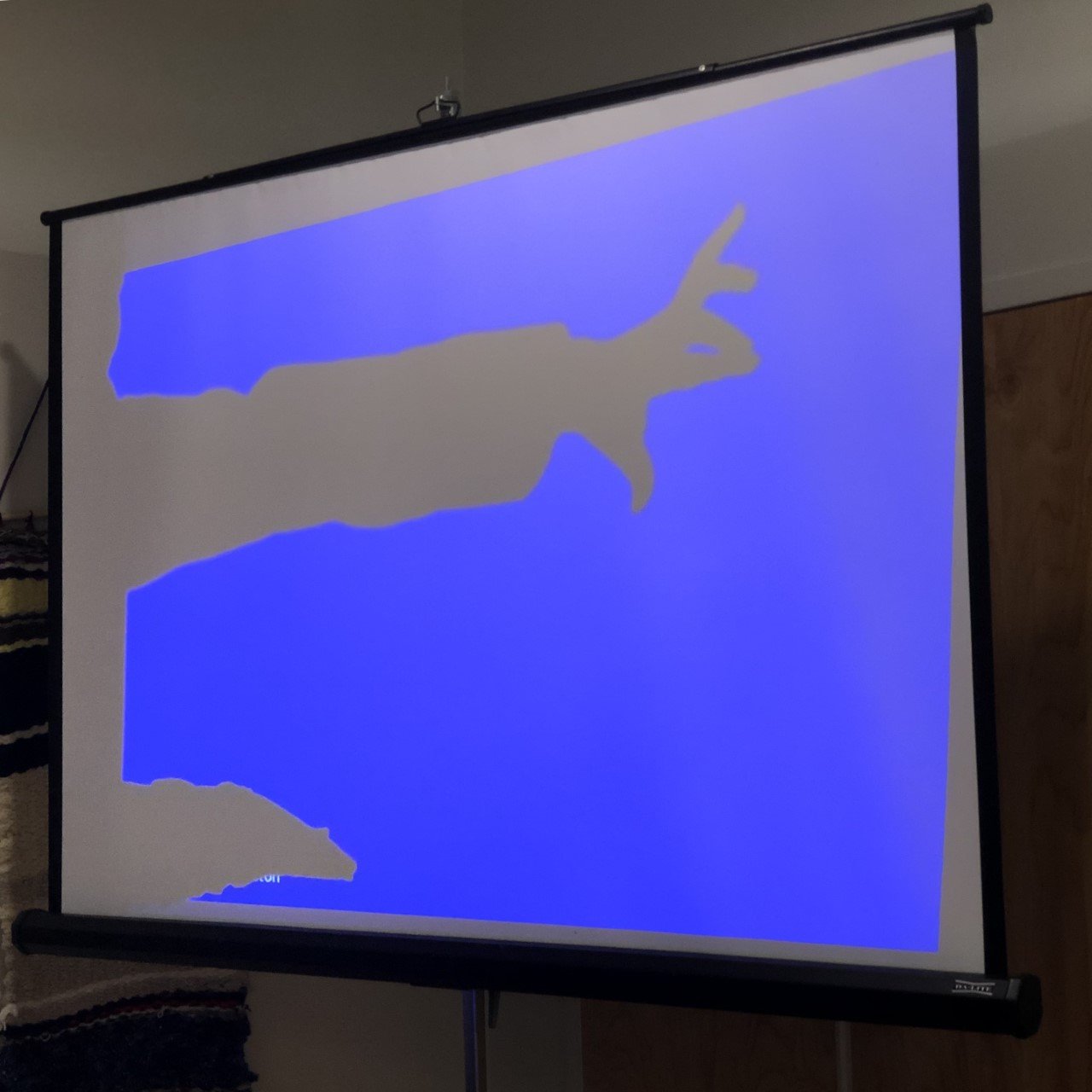 Our nine delegates will represent three nations at this year's MMUN: The Republic of Angola, The Lao People's Democratic Republic and New Zealand.
Our nine delegates will represent three nations at this year's MMUN: The Republic of Angola, The Lao People's Democratic Republic and New Zealand.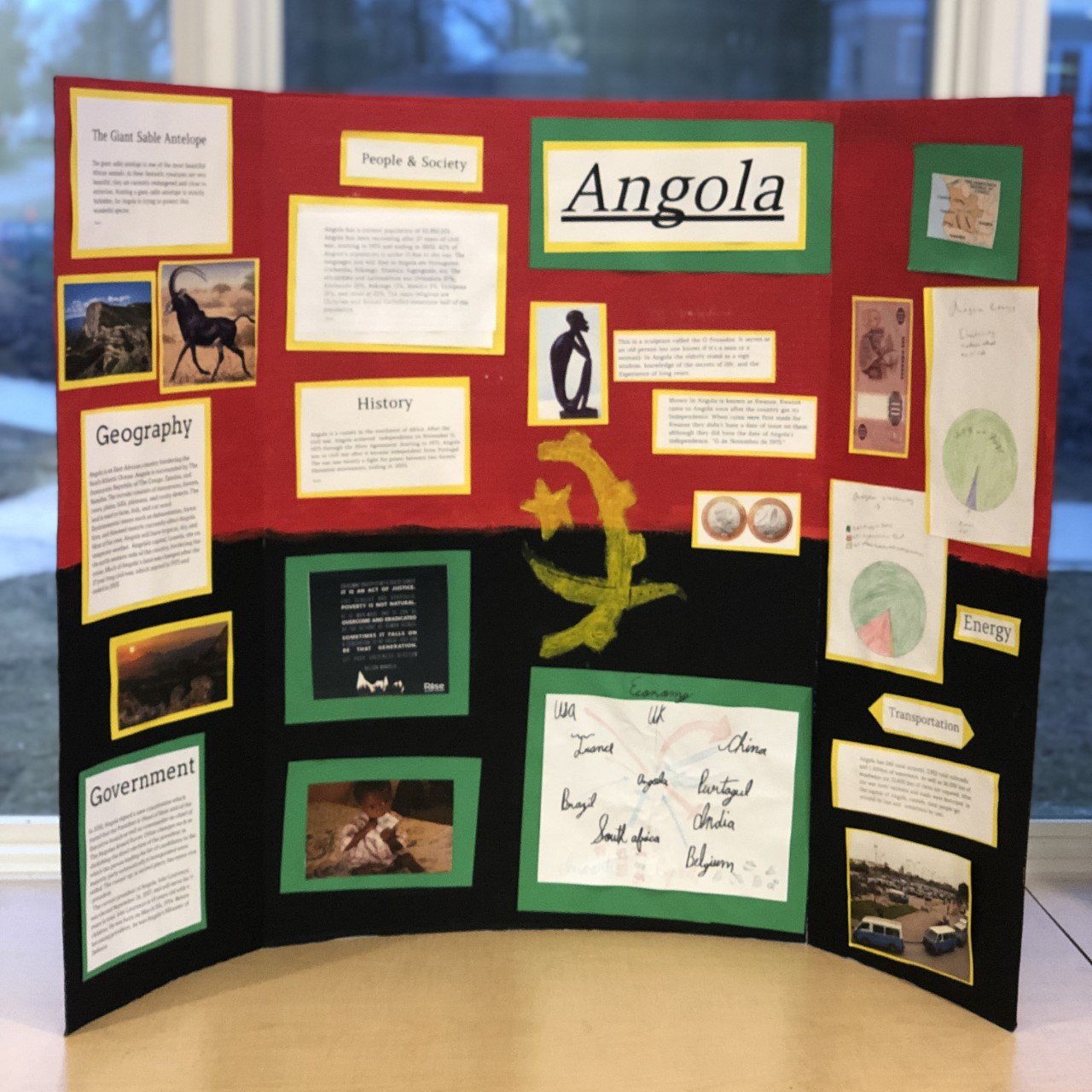
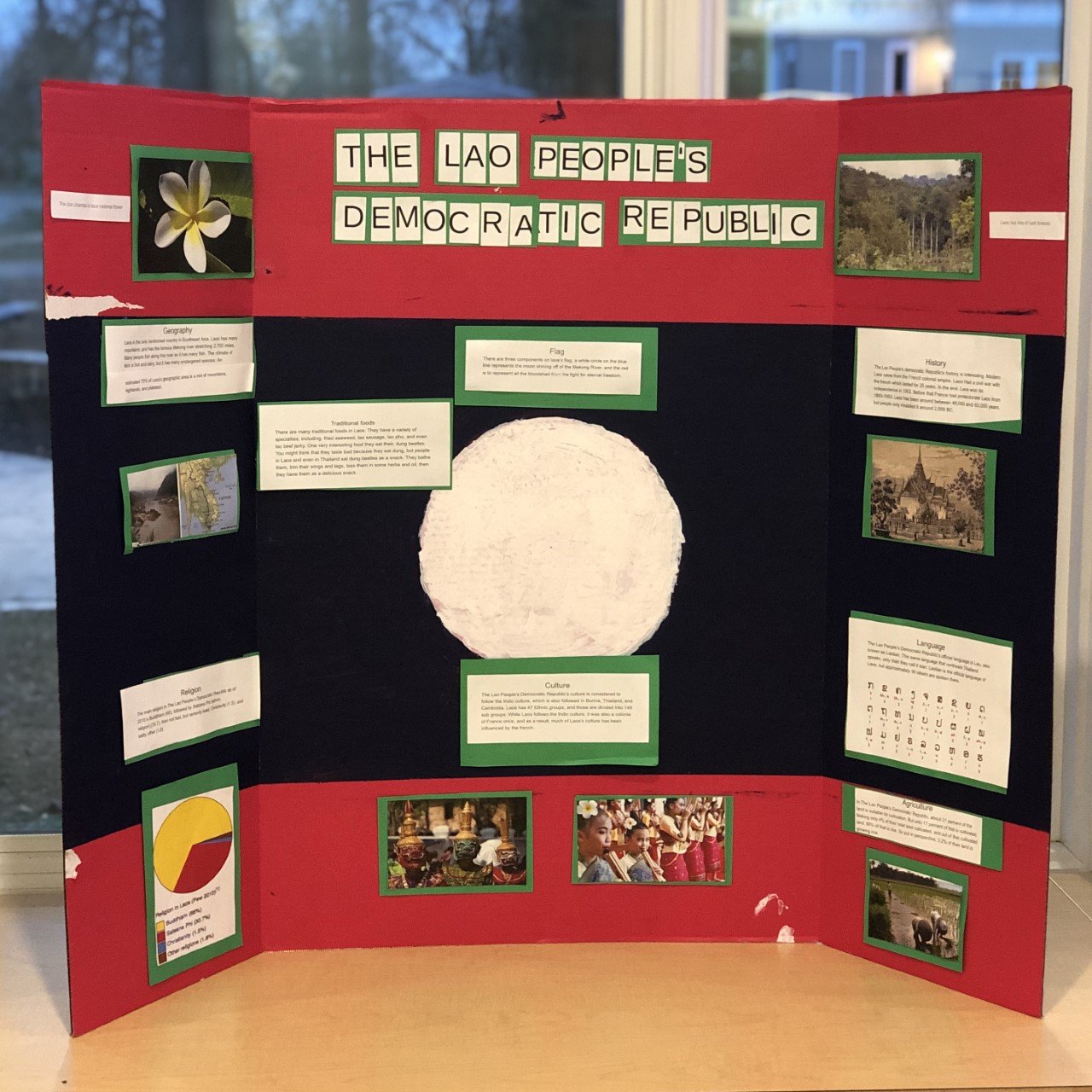
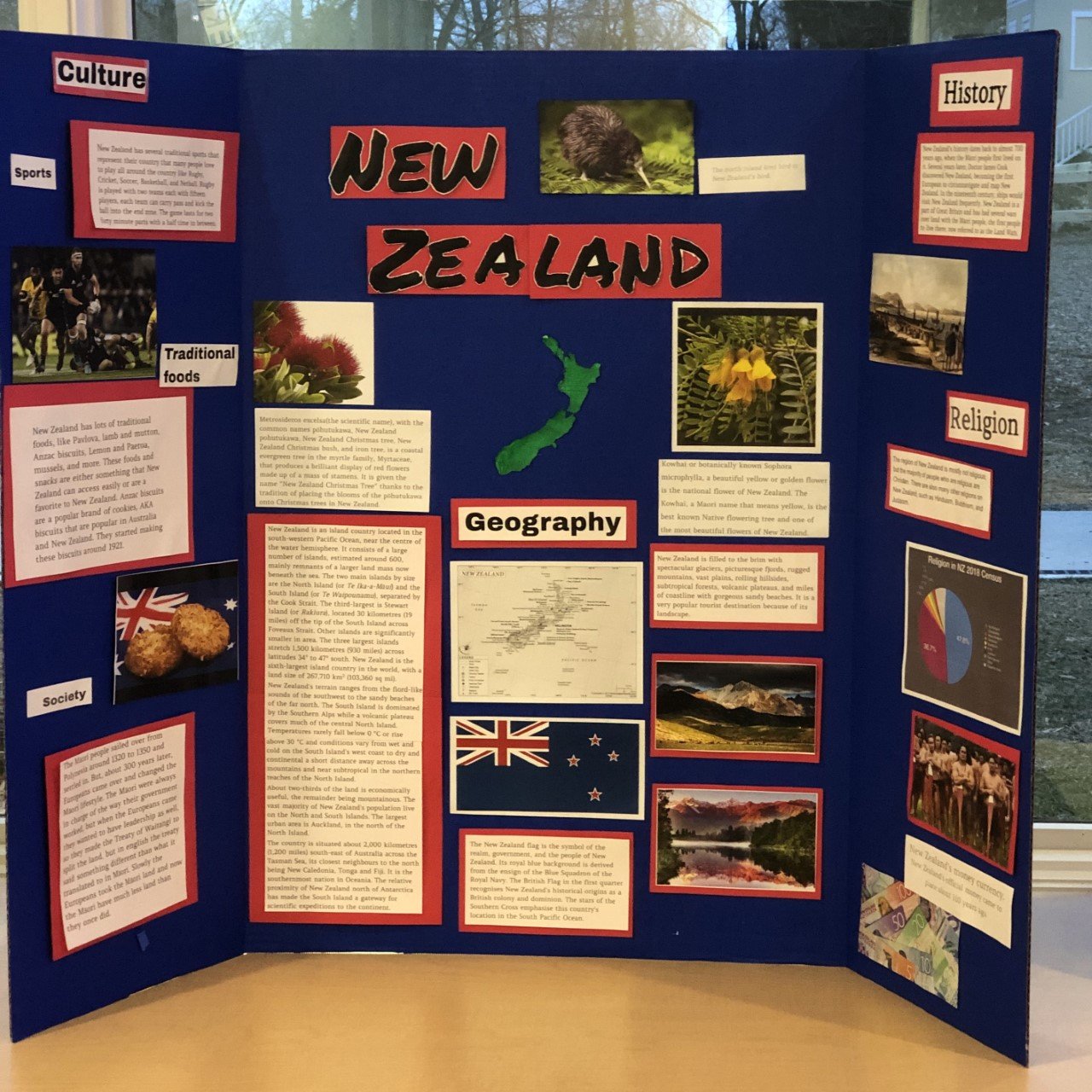 The three nations will sit on two committees: Economic and Social Counsil (ECOSOC) and Food and Agricultural Organization (FAO) and their topics will be the advancement of women, deforestation, food insecurity and illegal, unreported and unregulated fishing (IUU).For last evening's event, each delegate summarized her/his problem and proposed a solution in a carefully distilled one-minute opening speech.
The three nations will sit on two committees: Economic and Social Counsil (ECOSOC) and Food and Agricultural Organization (FAO) and their topics will be the advancement of women, deforestation, food insecurity and illegal, unreported and unregulated fishing (IUU).For last evening's event, each delegate summarized her/his problem and proposed a solution in a carefully distilled one-minute opening speech.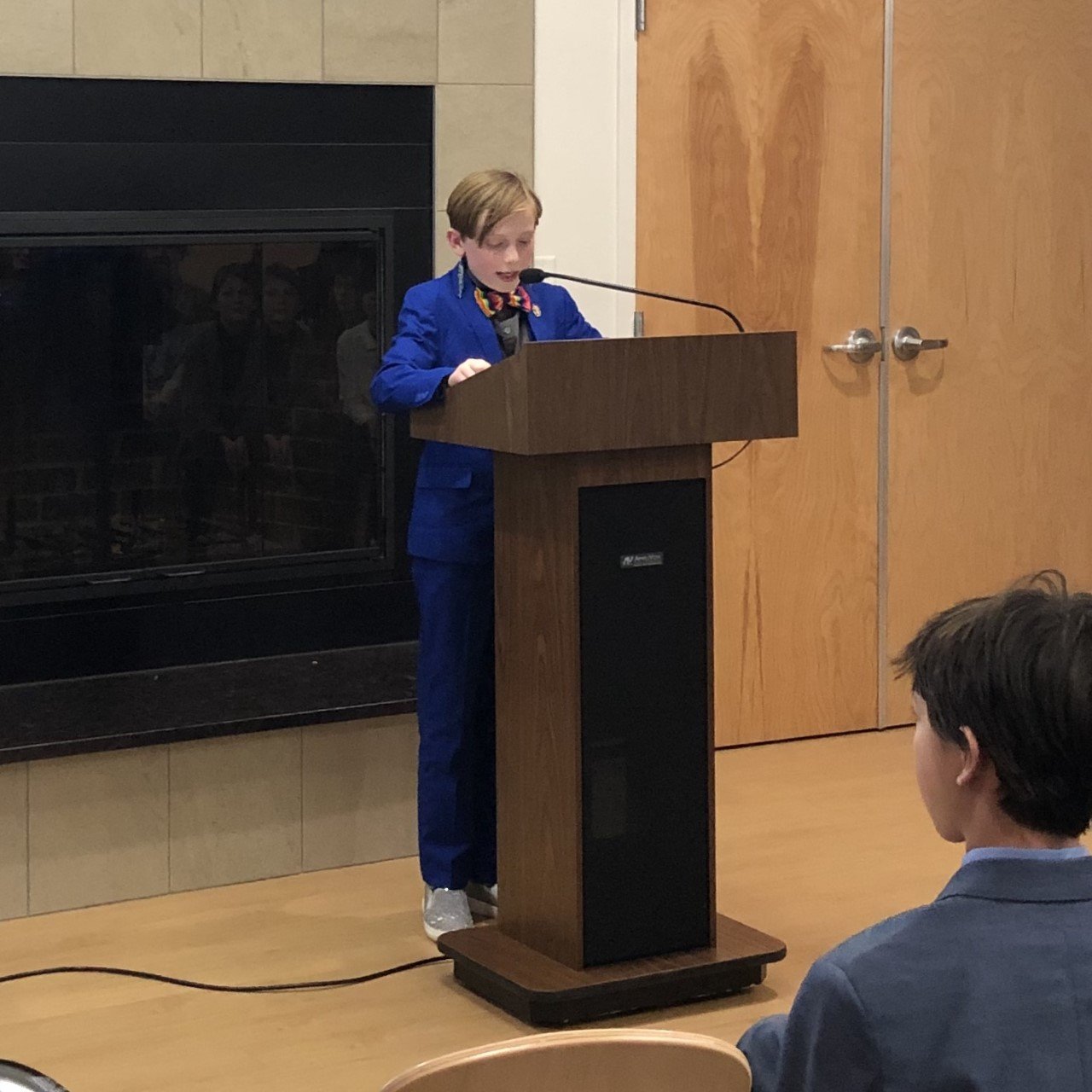
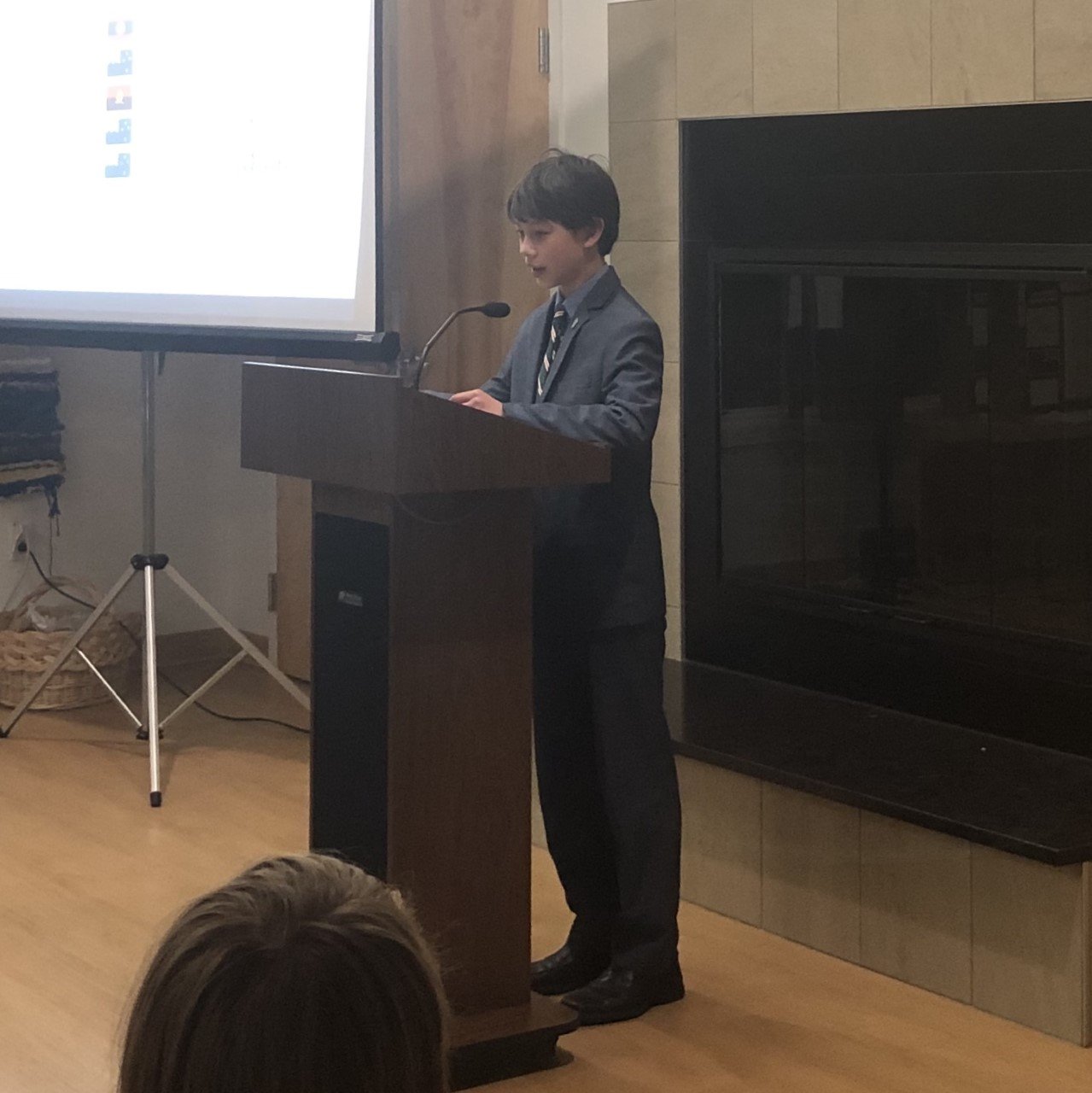
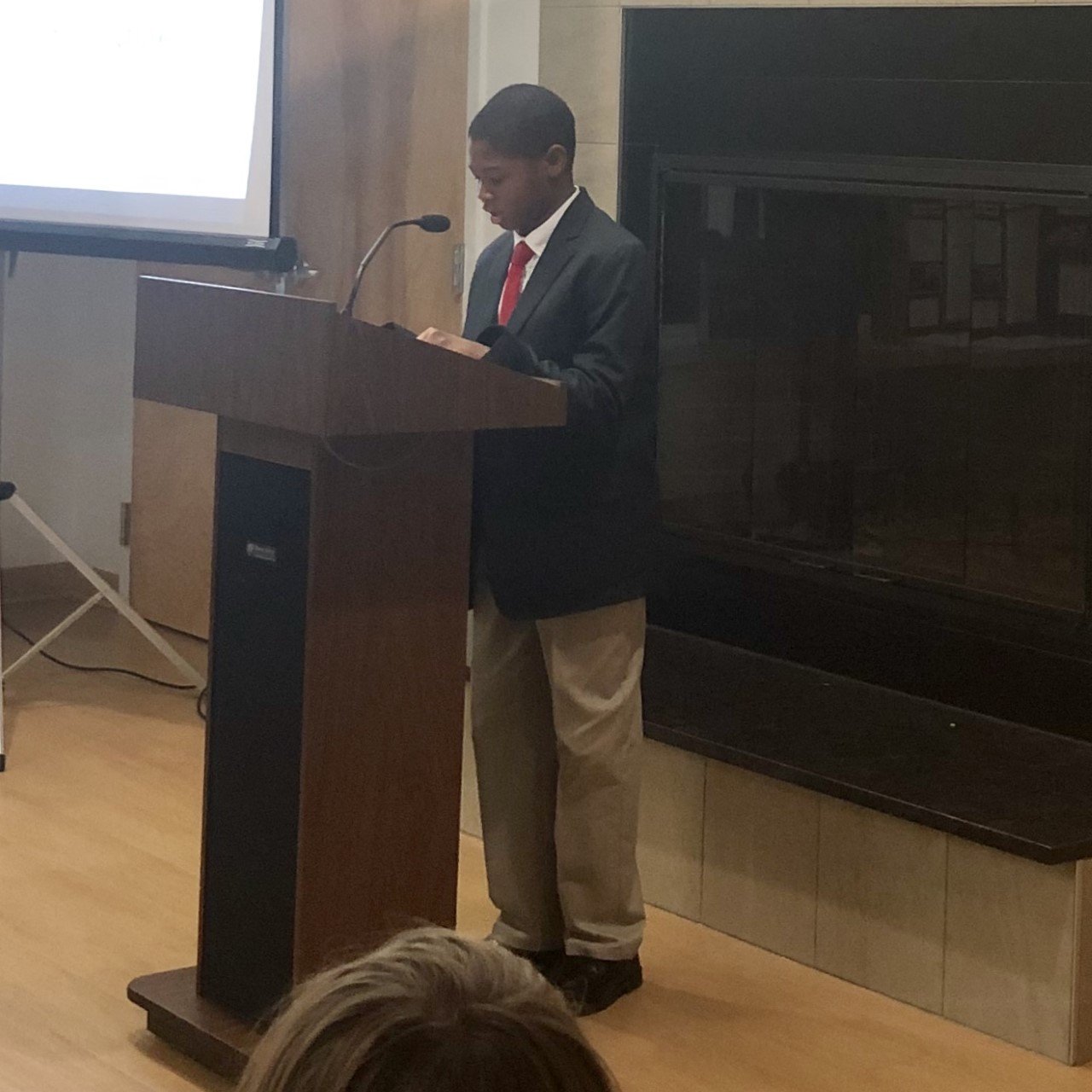

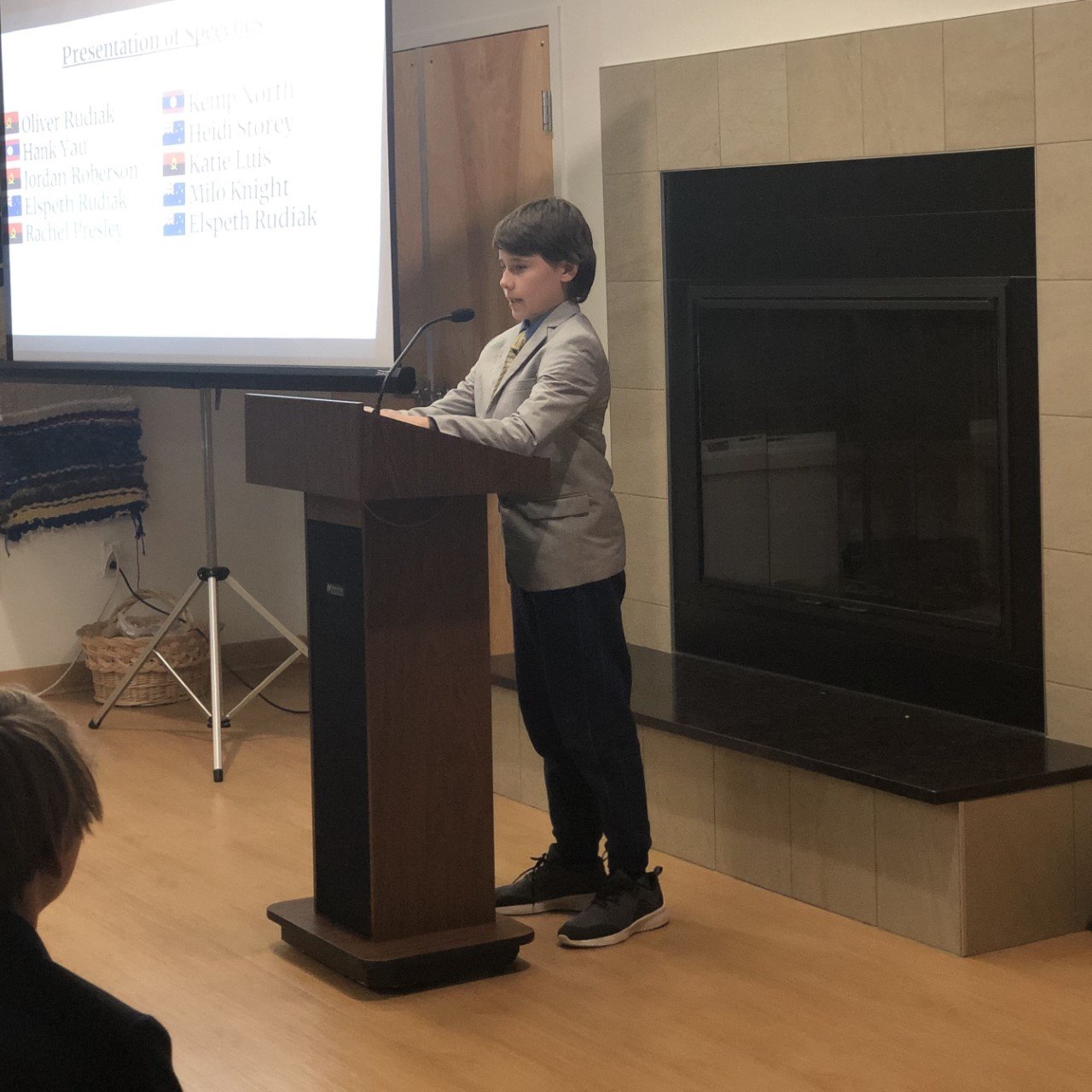
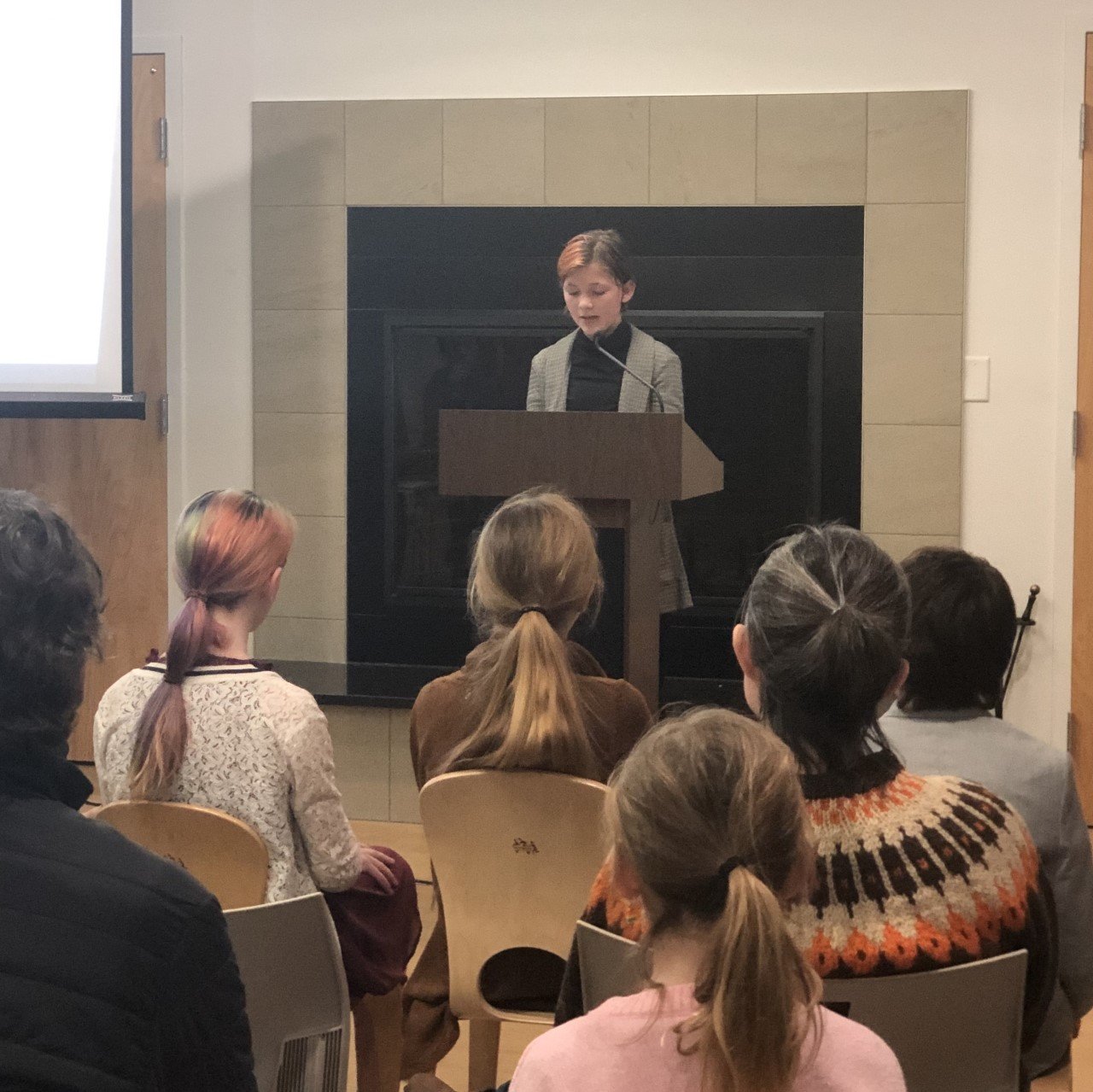
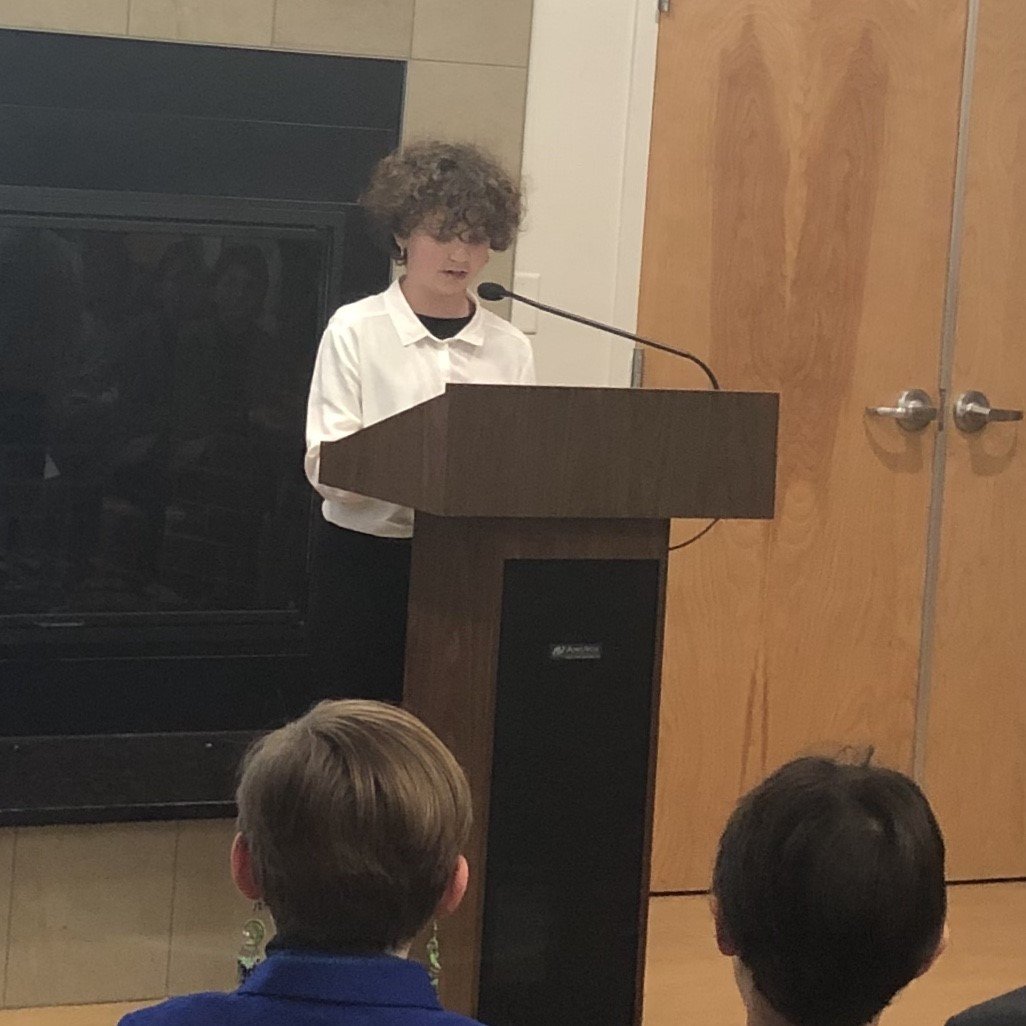
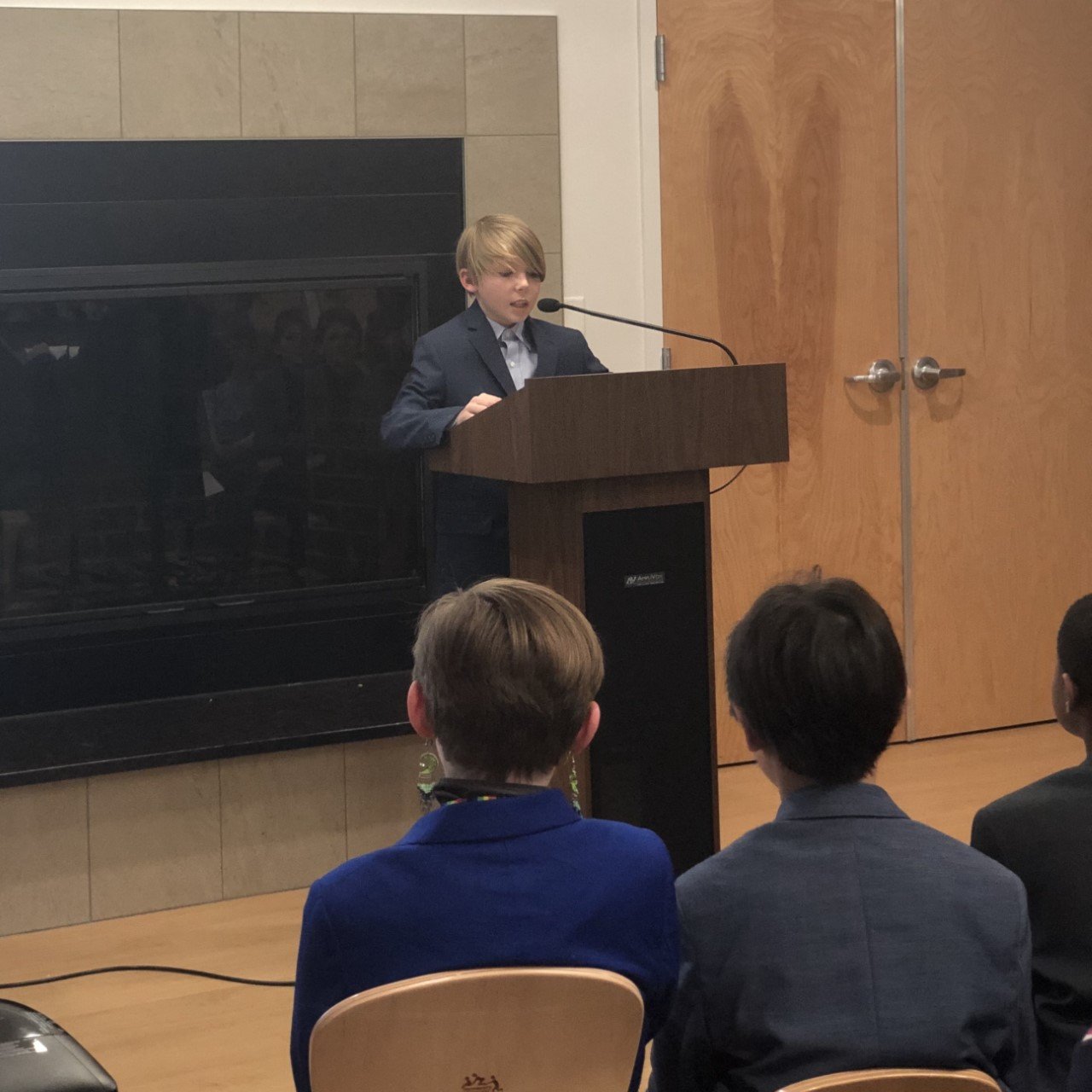
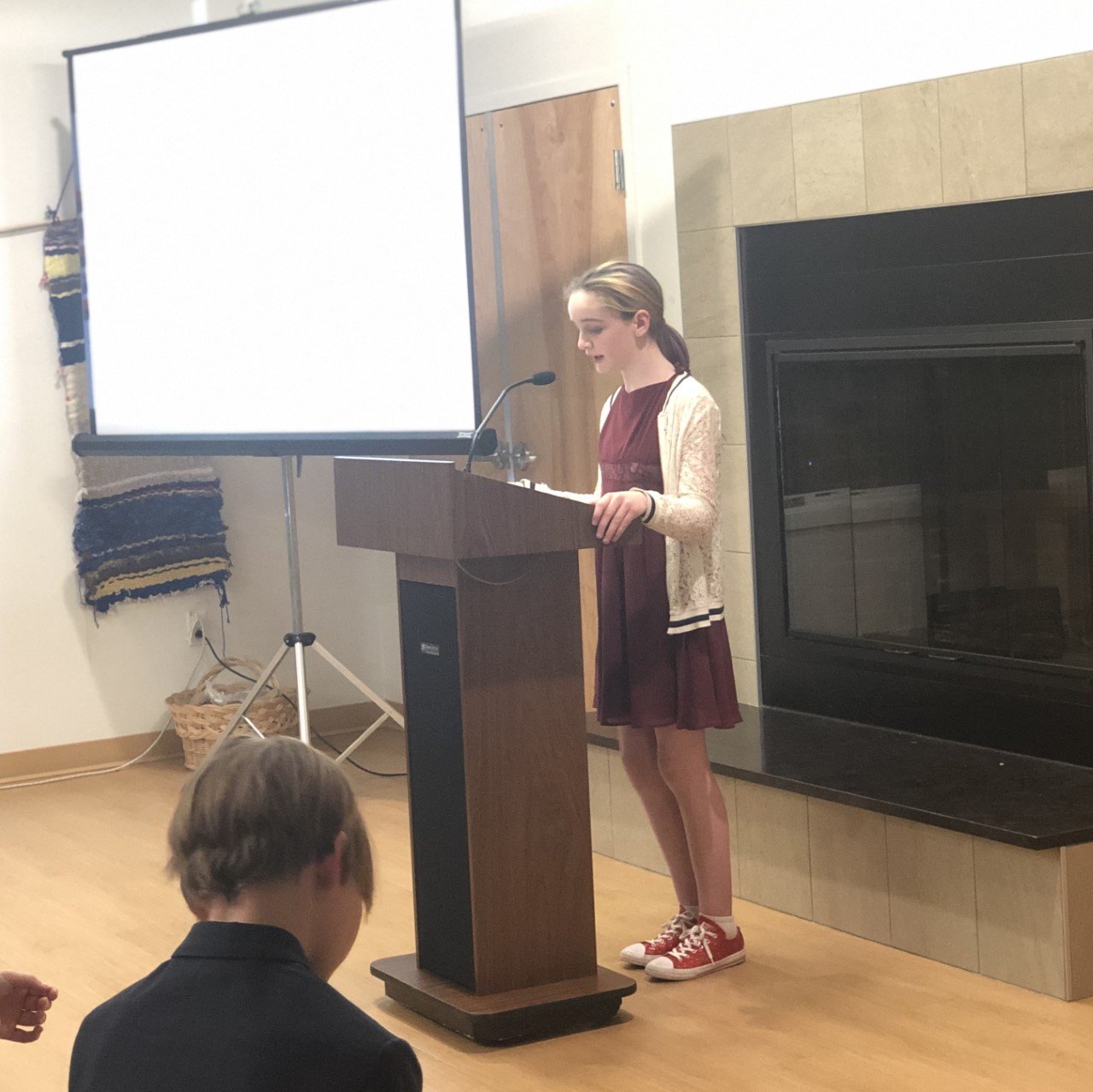 These incredible young people were commanding, poised, eloquent and inspiring, and it is an honor to witness their hard work and dedication.Thank you, delegates. Good luck (and have fun!) in New York City!
These incredible young people were commanding, poised, eloquent and inspiring, and it is an honor to witness their hard work and dedication.Thank you, delegates. Good luck (and have fun!) in New York City!
 As humans we have an impact on our world. Our actions and behaviors affect not only our own lives and spaces but the whole of nature, our planet. Let's be very honest here—it is not easy to stay mindful of the consequences of our choices; convenience and habit get in the way, and we are often tempted to take shortcuts and make decisions that save us time or extra work (I am thinking especially about the drink cups, straws, paper napkins, granola bar wrappers, plastic baggies and ketchup packets that pile up in our lives). But at Villa di Maria we are committed to making the effort, to evaluating our processes and making changes toward consciously lightening the load on our planet.And we are lucky because we have Sophie Andre, assistant in the Checkerboard Lower Elementary classroom, mother to a VdM student and advocate for the environment, on our team. Sophie keeps our staff, students and families motivated to reduce and recycle waste on campus as much as we can. She reminds us of the positive changes we've already made and inspires us to continue to find small (and big) ways to keep VdM focused on sustainability.
As humans we have an impact on our world. Our actions and behaviors affect not only our own lives and spaces but the whole of nature, our planet. Let's be very honest here—it is not easy to stay mindful of the consequences of our choices; convenience and habit get in the way, and we are often tempted to take shortcuts and make decisions that save us time or extra work (I am thinking especially about the drink cups, straws, paper napkins, granola bar wrappers, plastic baggies and ketchup packets that pile up in our lives). But at Villa di Maria we are committed to making the effort, to evaluating our processes and making changes toward consciously lightening the load on our planet.And we are lucky because we have Sophie Andre, assistant in the Checkerboard Lower Elementary classroom, mother to a VdM student and advocate for the environment, on our team. Sophie keeps our staff, students and families motivated to reduce and recycle waste on campus as much as we can. She reminds us of the positive changes we've already made and inspires us to continue to find small (and big) ways to keep VdM focused on sustainability. As I mentioned above, Villa di Maria has a number of processes in place to reduce our environmental impact. Here's some of what we're doing:
As I mentioned above, Villa di Maria has a number of processes in place to reduce our environmental impact. Here's some of what we're doing:




 Many of the changes listed above are small, incremental even, but cumulatively, they make a large positive impact. We are not only producing less waste as a campus, we are modeling these practices for our students, and that makes us pretty proud.We have more work to do and, with Sophie's motivation, we will continue to work toward as-close-to-zero-waste as we can possibly get. Some of our goals include:
Many of the changes listed above are small, incremental even, but cumulatively, they make a large positive impact. We are not only producing less waste as a campus, we are modeling these practices for our students, and that makes us pretty proud.We have more work to do and, with Sophie's motivation, we will continue to work toward as-close-to-zero-waste as we can possibly get. Some of our goals include:
 It's a new year and a new opportunity to check in with our family routines, to assess what is working and what might need a little work. In this series, Better Habits in 2020, we'll take a look at the kinds of things we can do to improve our and our children's lives. Today we'll focus on something that is a challenge for many busy families: nutrition!Webster's dictionary defines "nutrition" as... no, we're not really going down that road. But it is important to note that what defines "nutrition" might vary widely, depending on who's defining it. Fat, protein, carbohydrate and sugar contents in diets are debated in popular/social media, and individuals' different health situations can call for specific dietary regulations. For the purposes of this post, we're using recommendations from Harvard's School of Public Health and defining "nutrition" as a diet of foods that contain more essential nutrients like protein, fat, carbohydrates, fiber, vitamins, minerals and water and less added sugars, salts and processing chemicals.
It's a new year and a new opportunity to check in with our family routines, to assess what is working and what might need a little work. In this series, Better Habits in 2020, we'll take a look at the kinds of things we can do to improve our and our children's lives. Today we'll focus on something that is a challenge for many busy families: nutrition!Webster's dictionary defines "nutrition" as... no, we're not really going down that road. But it is important to note that what defines "nutrition" might vary widely, depending on who's defining it. Fat, protein, carbohydrate and sugar contents in diets are debated in popular/social media, and individuals' different health situations can call for specific dietary regulations. For the purposes of this post, we're using recommendations from Harvard's School of Public Health and defining "nutrition" as a diet of foods that contain more essential nutrients like protein, fat, carbohydrates, fiber, vitamins, minerals and water and less added sugars, salts and processing chemicals. Sounds pretty easy... unless you're a real person with a real family. It is so easy to grab-and-go a processed dinner filled with extra sugar and salt. Too easy for those of us with busy lives. But the real truth is, when we continue to eat easy, fast, sugary, salty (delicious) foods, we continue to deprive our bodies of all of the nutrients they need.At every age, we need a balance of foods, with a variety of nutrients for our bodies and brains to function at their best. And as I mentioned in our first
Sounds pretty easy... unless you're a real person with a real family. It is so easy to grab-and-go a processed dinner filled with extra sugar and salt. Too easy for those of us with busy lives. But the real truth is, when we continue to eat easy, fast, sugary, salty (delicious) foods, we continue to deprive our bodies of all of the nutrients they need.At every age, we need a balance of foods, with a variety of nutrients for our bodies and brains to function at their best. And as I mentioned in our first  Children's House Guide Jessie Braud explains it this way, "When I'm talking about nutrition, I always like a reminder of how we as adults feel when we aren't getting the nutrition we need. Sugary food, processed food, fatty food can affect us hard... adults will feel cranky, irritable, even nauseous as our bodies adjust to the fluctuations in blood sugar. So why would young children not feel the same? And to make matters even more challenging, they are still developing the self control that we have already acquired, and they are lacking the knowledge we possess about healthy eating. So when they are not eating well, it is an easy road to feeling out of control, towards misbehavior, to tantrums and crashes."
Children's House Guide Jessie Braud explains it this way, "When I'm talking about nutrition, I always like a reminder of how we as adults feel when we aren't getting the nutrition we need. Sugary food, processed food, fatty food can affect us hard... adults will feel cranky, irritable, even nauseous as our bodies adjust to the fluctuations in blood sugar. So why would young children not feel the same? And to make matters even more challenging, they are still developing the self control that we have already acquired, and they are lacking the knowledge we possess about healthy eating. So when they are not eating well, it is an easy road to feeling out of control, towards misbehavior, to tantrums and crashes."


 The very best part of Villa di Maria is our people. Our community of families, faculty and staff is something to be proud of. In this series, We are VdM, we’ll highlight the energies, talents, humor and wisdom of some of our amazing people. Today, we have a two-fer! We'll highlight a staff member and her family. Samantha Clarke is our Community Coordinator and her son Auggie started in the Children's House this year. Read on for more about Samantha, her husband Joey and Auggie.Villa di Maria: Tell us a bit about you and your family and what brought you to VdM.Samantha: Joey and I are both from St. Louis, from the other side of 270 in Chesterfield, and, in fact, went to the same high school (hello, Parkway Central). We hardly knew each other at the time but we reconnected later in life while he was living in Los Angeles and I in Aspen, CO. After importing Joey to Colorado, we spent a good year skiing and exploring all the mountains have to offer! The next thing we knew, we were moving home to St. Louis to focus on raising our 3 year old son, Auggie. We currently live in South City with our two perfectly insane dogs, Bacon and George.While a million months pregnant, I interviewed for a job at VdM and began working in July of 2017. I had some experience working in Montessori while finishing my graduate degree and knew it was a path I wanted my family go down!
The very best part of Villa di Maria is our people. Our community of families, faculty and staff is something to be proud of. In this series, We are VdM, we’ll highlight the energies, talents, humor and wisdom of some of our amazing people. Today, we have a two-fer! We'll highlight a staff member and her family. Samantha Clarke is our Community Coordinator and her son Auggie started in the Children's House this year. Read on for more about Samantha, her husband Joey and Auggie.Villa di Maria: Tell us a bit about you and your family and what brought you to VdM.Samantha: Joey and I are both from St. Louis, from the other side of 270 in Chesterfield, and, in fact, went to the same high school (hello, Parkway Central). We hardly knew each other at the time but we reconnected later in life while he was living in Los Angeles and I in Aspen, CO. After importing Joey to Colorado, we spent a good year skiing and exploring all the mountains have to offer! The next thing we knew, we were moving home to St. Louis to focus on raising our 3 year old son, Auggie. We currently live in South City with our two perfectly insane dogs, Bacon and George.While a million months pregnant, I interviewed for a job at VdM and began working in July of 2017. I had some experience working in Montessori while finishing my graduate degree and knew it was a path I wanted my family go down!
 VdM: What do you and your spouse do, career-wise?Samantha: Obviously, I currently work at VdM and have always worked in schools or education based non-profits. Joey operates a soap manufacturing company in north St. Louis city, Derrick Soap. HOWEVER, he is hoping to switch gears soon to exclusively furthering his writing career. **Proud spouse alert!** After finishing undergrad at Wash U, he left for LA to fulfill his dream of being a screen writer which is a fairly competitive, difficult thing to do. After nearly a decade of relentless pursuit, he caught his "break" winning a fellowship through the Academy of Motion Picture Arts and Sciences for an original screenplay he wrote, "Miles." Since then, he has acquired a manager and worked on several scripts, both original and adapted. We hope to see "Miles" in theaters (or somewhere) soon! Stay tuned...VdM: What is your favorite thing to do as a family on the weekend?Samantha:We LOVE sleeping in a bit and sitting around in PJs watching Premiere League soccer on Saturday mornings. We also enjoy eating ice cream at Clementine's and heading to the zoo whenever we can!
VdM: What do you and your spouse do, career-wise?Samantha: Obviously, I currently work at VdM and have always worked in schools or education based non-profits. Joey operates a soap manufacturing company in north St. Louis city, Derrick Soap. HOWEVER, he is hoping to switch gears soon to exclusively furthering his writing career. **Proud spouse alert!** After finishing undergrad at Wash U, he left for LA to fulfill his dream of being a screen writer which is a fairly competitive, difficult thing to do. After nearly a decade of relentless pursuit, he caught his "break" winning a fellowship through the Academy of Motion Picture Arts and Sciences for an original screenplay he wrote, "Miles." Since then, he has acquired a manager and worked on several scripts, both original and adapted. We hope to see "Miles" in theaters (or somewhere) soon! Stay tuned...VdM: What is your favorite thing to do as a family on the weekend?Samantha:We LOVE sleeping in a bit and sitting around in PJs watching Premiere League soccer on Saturday mornings. We also enjoy eating ice cream at Clementine's and heading to the zoo whenever we can! VdM: A question specifically for Auggie: What's your favorite animal and why?Auggie: "mmmmm Bacon!" (It really is his favorite food, but also our dog. Not entirely sure which he is referring to!)
VdM: A question specifically for Auggie: What's your favorite animal and why?Auggie: "mmmmm Bacon!" (It really is his favorite food, but also our dog. Not entirely sure which he is referring to!) Thank you, Clarke family, for the photos and for being a part of Villa di Maria!
Thank you, Clarke family, for the photos and for being a part of Villa di Maria! Throughout February, St. Louisans have many opportunities to honor and celebrate Frederick Douglass and many other African Americans who've played central roles in U.S. history with events at libraries, museums and other venues in our region. Check back here each Monday this month for a list of those events for the coming week.
Throughout February, St. Louisans have many opportunities to honor and celebrate Frederick Douglass and many other African Americans who've played central roles in U.S. history with events at libraries, museums and other venues in our region. Check back here each Monday this month for a list of those events for the coming week.




 Thank you to Shannon O'Connell (one of the lucky staff members who gets to accompany the field trips) for the photos!
Thank you to Shannon O'Connell (one of the lucky staff members who gets to accompany the field trips) for the photos!